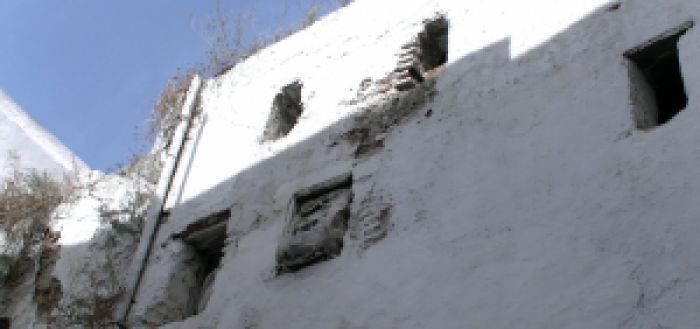Walled in - the fate of Hadj Mohammed Mesfewi
- Written by
- font size decrease font size increase font size
 Example , kasaan media, 2015
Example , kasaan media, 2015
History repeats itself again and again.
The world has already looked with disgust at Muslim punishment rituals that have provoked international protests. Few did anything about it.
The IS, which can no longer be surpassed in cruelty, will remain a phenomenon of its time.
In our history, today, we write the year 1906.
The Algeciras Conference was a few weeks ago; German foreign policy had been in a state of flux after the first Moroccan crisis to the diplomatic position-one in Hotel "Reina Christina" in the Andalusian port city. On April 7th, after countless rounds of negotiations in the intimate circle of the colonial masters, the document was signed.
But there was still the story of a shoemaker from Morocco, which dominated the news these days. Not because Mesfewi should have murdered 36 women, but because of the following judgement, which caused real storms of protest in the public world. So much so that the Sultan who ruled Morocco in those days had to bow to international pressure.
Mesfewi was a murderer, that was and is undisputed. Only a few contemporary documents have been preserved. But how the Moroccan judiciary of the time came to the confession, the attentive modern could think about, was not discussed.
By torture, of course.
Mesfewi had lured women into the deadly trap for years with the same trick, inviting them to dinner, poisoning them with a narcotic and robbing the almost comatose victim, then mutilating her - probably assisted by a 70-year-old woman, about whose fate little is known.
The corpses were later buried at his small shoe shop, other victims on a property belonging to his family. His deeds were committed out of greed.
Moroccans -today- are very buttoned up when asked about the cobbler and the public letter-writer when Mesfewi was still acting before his conviction.
The Times And Democrat correspondent wrote on June 28th, 1906, when the gruesome game was over, about the complications that the execution method had caused.
Numerous correspondents of those days reported about the gruesome ritual by which the delinquent was kept continuously alive so that he was able to receive the further blows the next day. He was rubbed with oil and vinegar. That's how it went for a month. Meanwhile, there were considerations in Moroccan domestic politics to refrain from the crucifixion sentence.
Instead, one was not too pity to stand in front of the almost hysterical people who had gathered at the execution site of Mr Mesfewi. To wall in the murderous contemporary. He could not sit down, could not stand, and was walled in to starve and die of thirst. Weakened by the agony of the whip lashes, which had already been reduced to give a spectacle to the shouting and screaming crowd, he disappeared in the dark. The executioner brought him bread and water, then Mesfewi was left to his fate.
For two days, one could still hear screams from the dark, bricked hole. Whimpering for mercy, then the delinquent died a painful death.
According to the understanding at the time, justice had been done. The crowd seemed disappointed that the killer's fate had been sealed.














